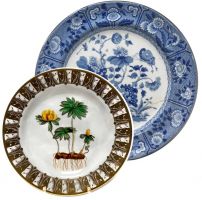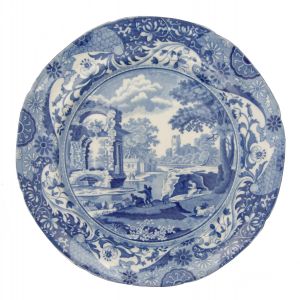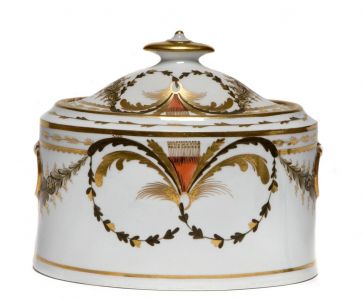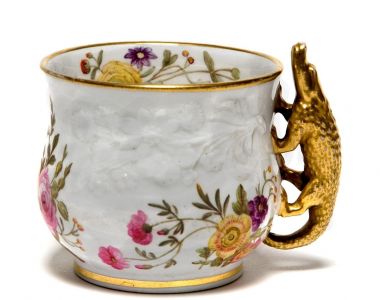- History
- Pottery
- Industry
Achievements: Spode, father and son

 The creative genius of Josiah Spode, father and son, made an enormous impact on both Georgian society and the history of ceramics. They introduced pottery to grace the homes of royalty, nobility, and society.
The creative genius of Josiah Spode, father and son, made an enormous impact on both Georgian society and the history of ceramics. They introduced pottery to grace the homes of royalty, nobility, and society.
Josiah Spode IBy 1785 Spode I had developed the first commercially viable blue printed earthenware. The factory continued in production for over two hundred years, and "Staffordshire blue & white" was shipped worldwide. It seems inevitable that Spode I would also explore the holy grail of perfecting English porcelain. Whether he had finished his suite of experiments or not when he died suddenly in 1797, we shall never know, but Josiah II, also a trained potter and an even greater merchant, took up the challenge and brought the porcelain to perfection.  An early Spode printed pattern Two Figures II 1790-1810 for more on this pattern click here  One of the most popular Spode blue printed patterns, Italian, introduced in 1816 for more information click here more on Spode Blue Printed Earthenware
|
Josiah Spode IIOn the death of his father, Josiah Spode II left his oldest son William, and his trusted partner William Copeland, running the London retail business and joined his younger son, Josiah Spode III, at the Stoke pottery. Spode II took the lead at the factory and returned to his potters roots to continue the family tradition of experimentation. Determined to be on the cutting edge, by 1800 he was ready to launch Spode’s bone china on the London market. Its pure whiteness and ease of manufacture meant it soon became the English standard porcelain body.  Bone china old oval shaped sugar, with hand-painted decoration and gilding , 1800-1805 The Potteries Museum & Art Gallery, Stoke-on-Trent  Bone china cabinet or chocolate cup, floral embossed shape with Egyptian revival handle, 1810-20 The Potteries Museum, Stoke-on-Trent
|


